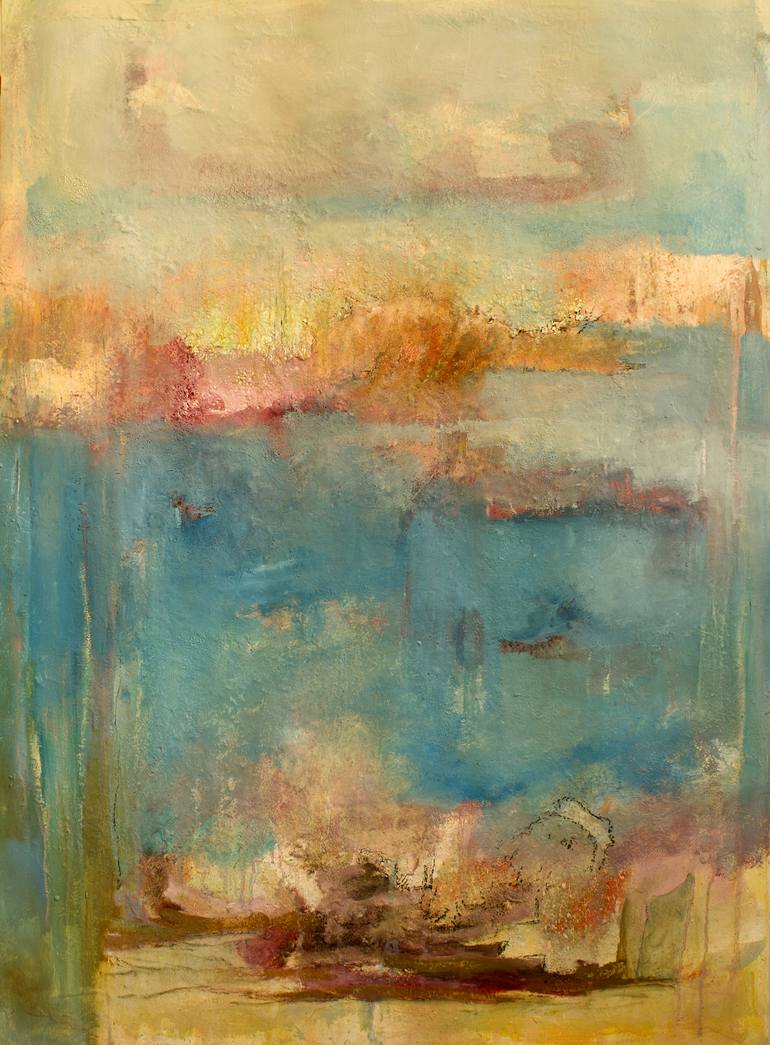





VIEW IN MY ROOM
manna.two.eighteen Print
Spain
Select a Material
Fine Art Paper
Select a Size
9 x 12 in ($40)
Add a Frame
White ($80)
Artist Recognition

Featured in the Catalog

Artist featured in a collection
About The Artwork
Manna (Hebrew: מָן) or al-Mann (Arabic: المَنّ , Kurdish: gezo, Persian: گزانگبین), sometimes or archaically spelled mana, is an edible substance which, according to the Bible God provided for the Israelites during their travels in the desert during the forty-year period following the Exodus and prior to the conquest of Canaan. Some scholars have proposed that manna is cognate with the Egyptian term mennu, meaning "food". At the turn of the twentieth century, Arabs of the Sinai Peninsula were selling resin from the tamarisk tree as man es-simma, roughly meaning "heavenly manna". Tamarisk trees (particularly Tamarix gallica) were once comparatively extensive throughout the southern Sinai, and their resin is similar to wax, melts in the sun, is sweet and aromatic (like honey), and has a dirty-yellow color, fitting somewhat with the Biblical descriptions of manna. However, this resin is mostly composed of sugar, so it would be unlikely to provide sufficient nutrition for a population to survive over long periods of time, and it would be very difficult for it to have been compacted into cakes. Other researchers have believed manna to be a form of lichen - a plant colony that often has a low mass per unit volume density and a large "sail area." In particular, Lecanora esculenta has been postulated. Known natural aerial falls of various lichens have been described as occurring in accounts separate from that in the bible. "In some parts of Asia Lecanora esculenta covers the soil to such a degree that, according to Parrot, it forms beds 15 to 20 centimetres thick." In the Biblical account, the name manna is said to derive from the question man hu, seemingly meaning "What is it?"; this is perhaps an Aramaic etymology, not a Hebrew one. Man is possibly cognate with the Arabic term man, meaning plant lice, with man hu thus meaning "this is plant lice", which fits one widespread modern identification of manna, the crystallized honeydew of certain scale insects. In the environment of a desert, such honeydew rapidly dries due to evaporation of its water content, becoming a sticky solid, and later turning whitish, yellowish, or brownish; honeydew of this form is considered a delicacy in the Middle East, and is a good source of carbohydrates. In particular, there is a scale insect that feeds on tamarisk, the Tamarisk manna scale (Trabutina mannipara), which is often considered to be the prime candidate for biblical manna. Another type is turkey oak manna, also called Persian gezengevi- gezo, men, Turkish Kudret helvasi, man-es-simma, also Diarbekir manna, or Kurdish manna. It is formed by aphids and appears white. It was common in western Iran, northern Iraq and eastern Turkey. When dried it forms into crystalline lumps which are hard and look like stone. They are pounded before inclusion in breads. A number of ethnomycologists, including Terence McKenna, have suggested that most characteristics of manna are similar to that of Psilocybe cubensis mushrooms, notorious breeding grounds for insects, which decompose rapidly. These peculiar fungi naturally produce a number of molecules that resemble human neurochemicals, and first appear as small fibres (mycelia) that resemble hoarfrost. Psilocybin, the primary psychoactive molecule in the "Psilocybe cubensis" mushroom, has been shown to produce spiritual experiences, with "personal meaning and spiritual significance" when test subjects were evaluated 14 months later. The speculation that manna was an entheogen, also paralleled in Philip K. Dick's posthumously published The Transmigration of Timothy Archer, is supported in a wider cultural context when compared with the praise of soma in the Rigveda, Mexican praise of teonanácatl, the peyote sacrament of the Native American Church, and the holy ayahuasca used in the ritual of the União do Vegetal and Santo Daime churches. Other minority identifications of manna are that it was a kosher species of locust, or that it was the sap of certain succulent plants (such as those of the genus Alhagi, which have an appetite-suppressing effect). English Wikipedia on manna.
Details & Dimensions
Print:Giclee on Fine Art Paper
Size:9 W x 12 H x 0.1 D in
Size with Frame:14.25 W x 17.25 H x 1.2 D in
Frame:White
Ready to Hang:Yes
Packaging:Ships in a Box
Shipping & Returns
Delivery Time:Typically 5-7 business days for domestic shipments, 10-14 business days for international shipments.
Handling:Ships in a box. Art prints are packaged and shipped by our printing partner.
Ships From:Printing facility in California.
Have additional questions?
Please visit our help section or contact us.
Spain
In an age of technological innovation, when the competitive flux of production has taken the place of the physical expression of one's inner universe and imaginary, and after it's obituary has been declared innumerous times over the last 150 years, painting presents itself as an act of resistance. A melancholic resistance that mirrors several times and spaces, between past and present, yet mostly, the extent of an utopian time and space: the inner time and space of its author. What room is there in the world for mystery? What language is there for a logic and wisdom that is not binary? Can we go beyond the argument? What other relationship can you have with the world besides dominance? Listening to the truth of being is the silent response to a being's calling. This silent response is found in painting.
Artist Recognition

Featured in Saatchi Art's printed catalog, sent to thousands of art collectors

Artist featured by Saatchi Art in a collection
Thousands Of Five-Star Reviews
We deliver world-class customer service to all of our art buyers.
Global Selection
Explore an unparalleled artwork selection by artists from around the world.
Satisfaction Guaranteed
Our 14-day satisfaction guarantee allows you to buy with confidence.
Support An Artist With Every Purchase
We pay our artists more on every sale than other galleries.
Need More Help?